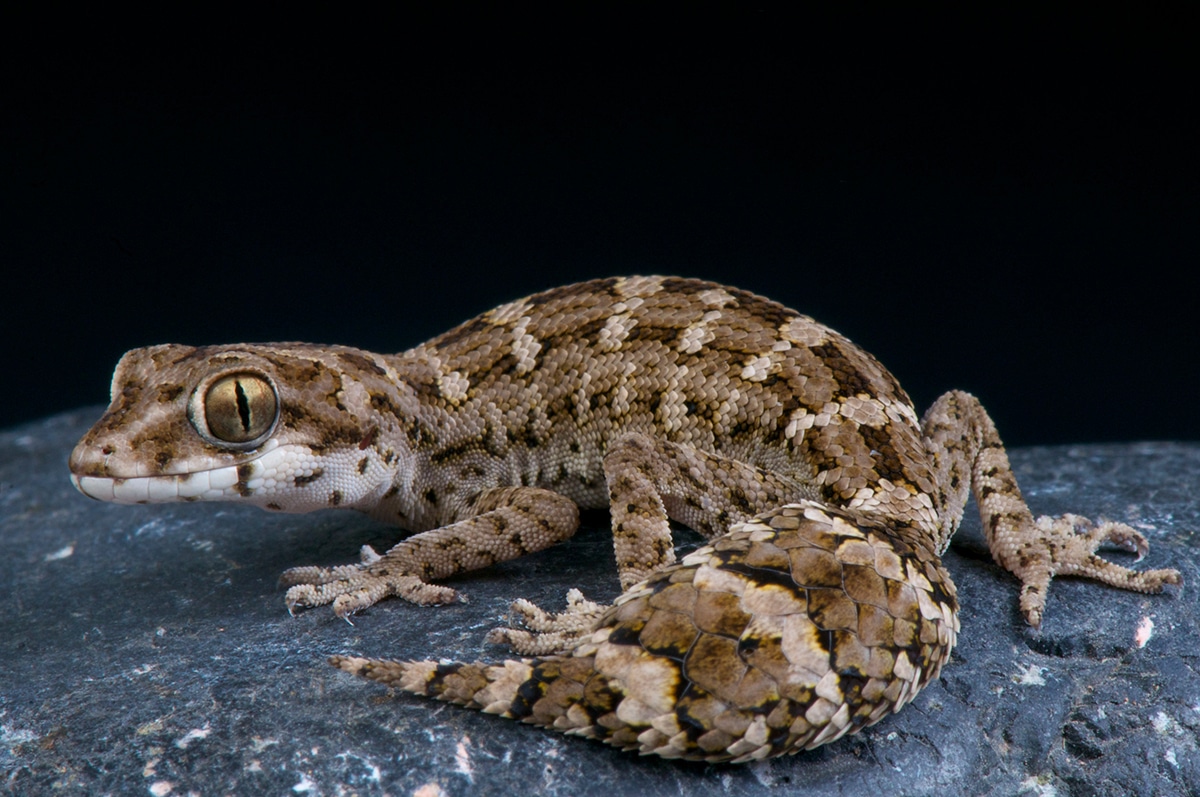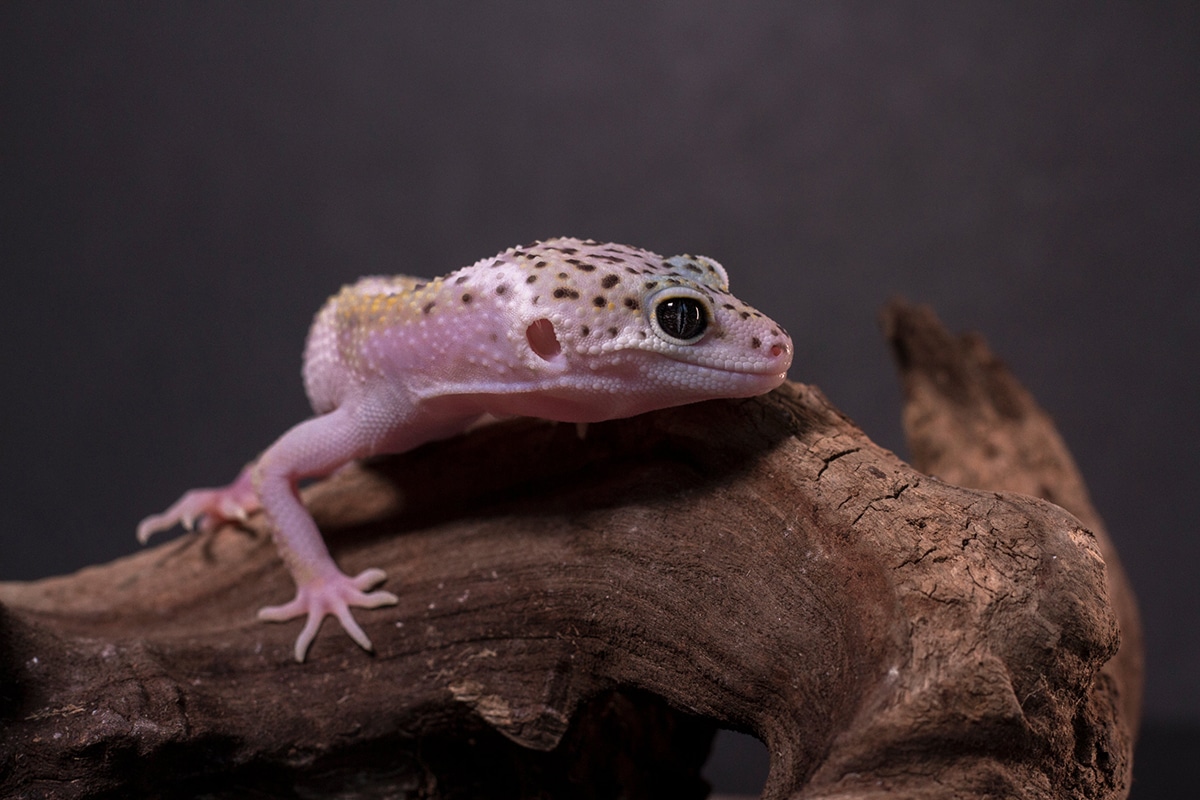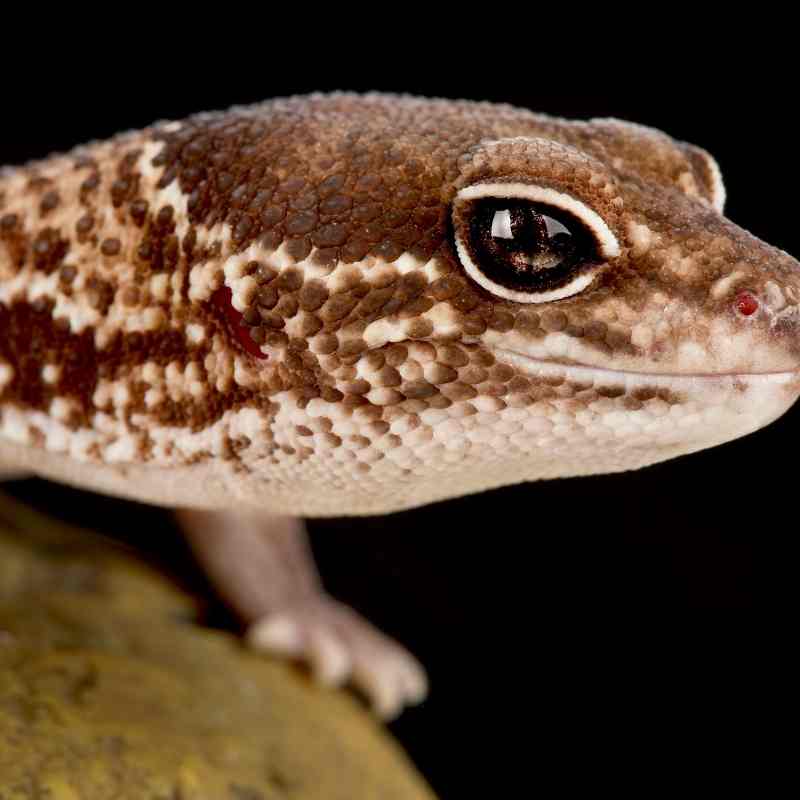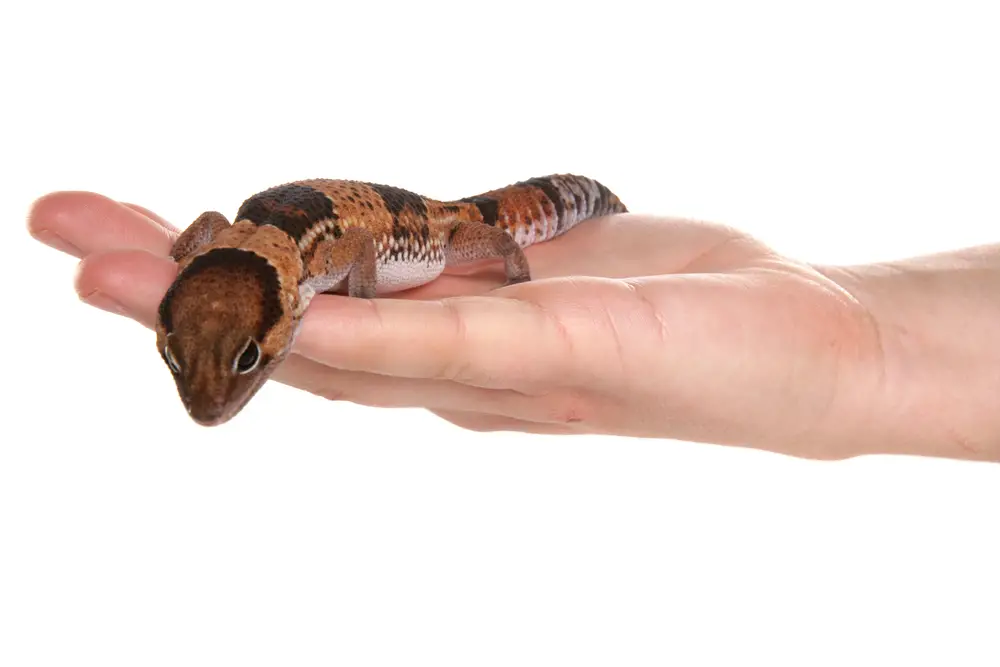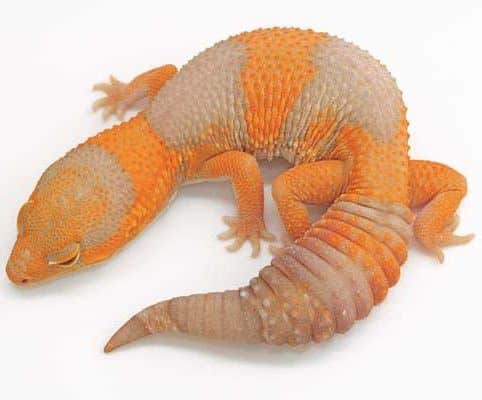Can Geckos Live Together – Cohabitation Questions Answered
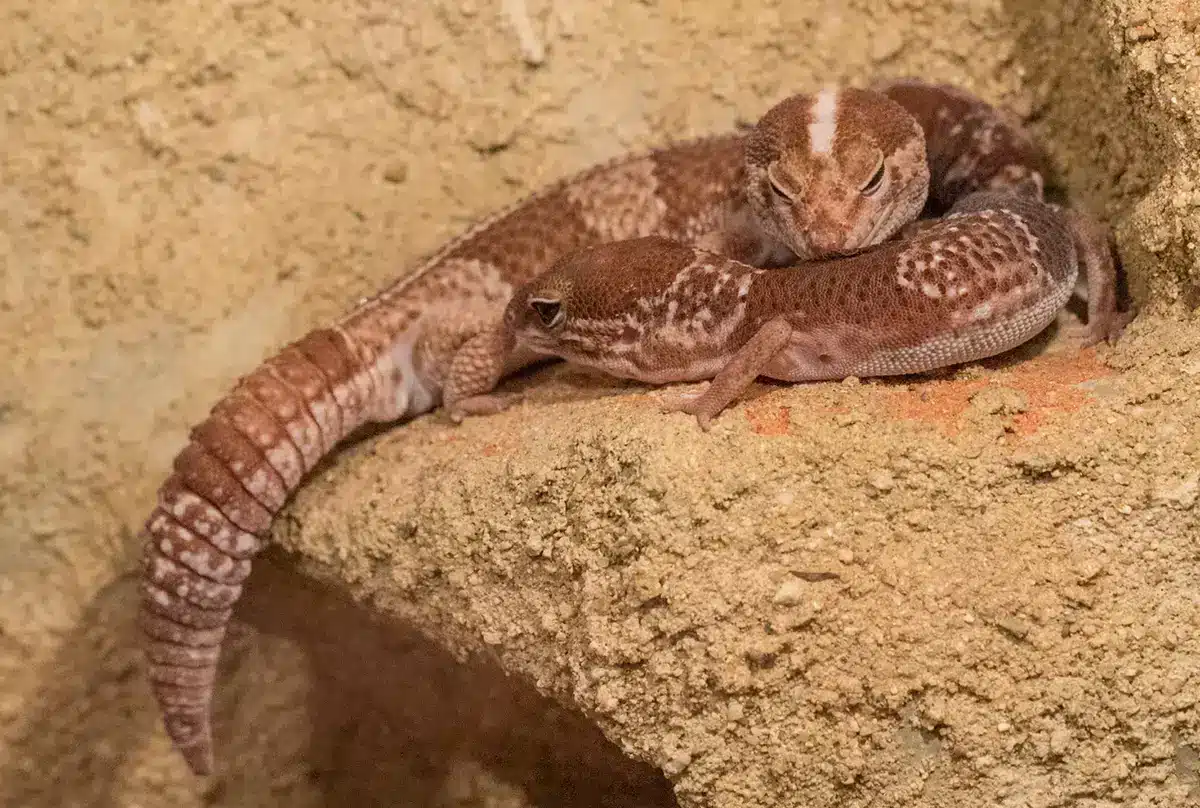
African fat-tailed geckos are growing to be a very popular breed of reptilian pets. However, gecko lovers often wonder whether they should consider adopting more than one fat-tailed gecko into their family.
Female African fat-tailed geckos can typically cohabitate with one another. However, male fat-tailed geckos must be kept apart from other males due to their aggressive nature.
Keep reading to learn about some of the most common questions that might arise regarding introducing more than one fat-tailed gecko to a habitat.
Contents
Can Two Male Fat-Tailed Geckos Live Together?
Cohabitation between fat-tailed geckos can be extremely complicated at times. However, experts agree that male fat-tailed geckos should not cohabitate together under any circumstance.
Male fat-tailed geckos should not live together. Males are particularly territorial and aggressive, especially if a female is in the enclosure. So, most people don’t recommend keeping more than one male in the same habitat.
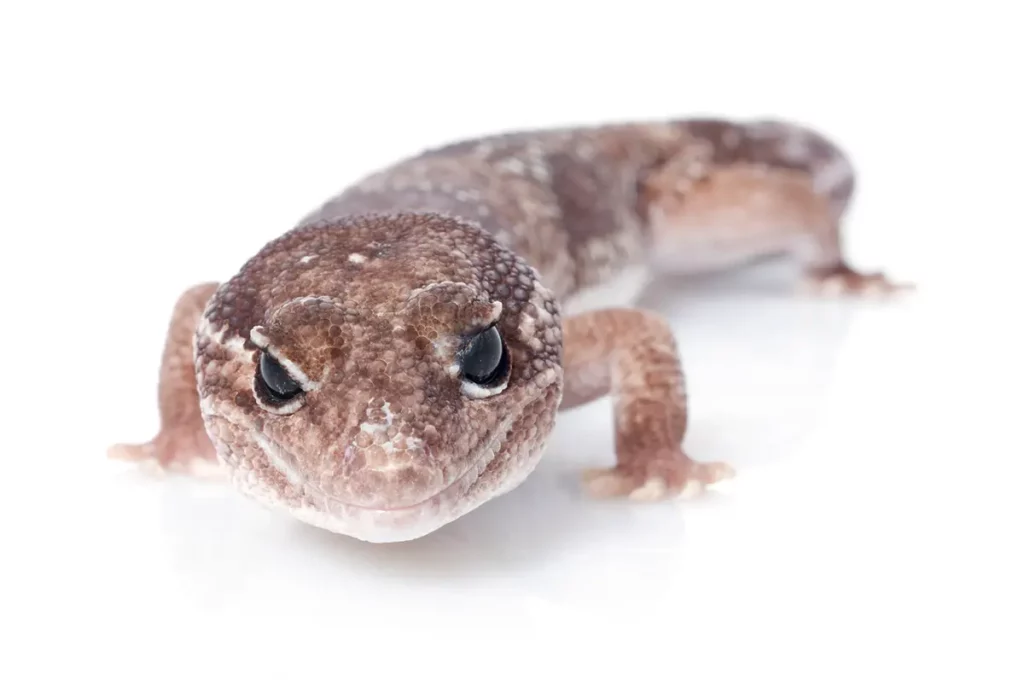
Male African fat-tailed geckos are rarely seen together in the wild.
When a male gecko sees another male near its habitat, it makes a series of aggressive sounds to warn the potential opponent to stay away. Housing two males in the same habitat can lead to serious injury of one or both lizards.
Can Two Female Fat-Tailed Geckos Live Together?
Male fat-tailed geckos are too territorial to live in the same habitat safely. But you may be wondering: can females be safely cohabitated?
Most experts agree that you should avoid cohabitating female fat-tailed geckos whenever possible. However, it is possible to keep multiple female geckos in a habitat together.
Cohabitating more than one female fat-tailed gecko can be difficult. Even if you choose to cohabitate two female fat-tail geckos, it should ideally only be for a limited amount of time. This shortened time frame will reduce the stress inflicted on each lizard resulting from cohabitation.
Can Males and Females Live Together?
Male and female African fat-tailed geckos can live together. However, experts recommend that only experienced gecko owners attempt to cohabitate more than one gecko. Still, cohabitation puts stress on your geckos, so you should try to keep them in separate enclosures.
Male and female fat-tailed geckos often cohabitate for some time as a part of the breeding process. If you’re aiming for gecko reproduction, you might consider keeping your reptiles in the same habitat for the entirety of the breeding season, which can last for as long as five months.
Male fat-tailed geckos don’t often face the same territorial problems with females they typically face with other males.
The males will compete for a female’s attention, which means females are usually safe from aggressive behavior. However, that doesn’t mean you’re safe from fighting when you cohabitate more than one of these reptiles, regardless of sex.
Because of this, it is possible to keep one male in the same habitat with more than one female.
Breeding African Fat-Tailed Geckos
Fat-tailed geckos’ breeding season typically occurs during the late fall, winter, or spring. The most common months for these geckos to breed range from November to March.
The breeding process for fat-tailed geckos can be complex at times. For the best results, experts recommend you fine-tune the climatic conditions of the geckos’ habitat to replicate the conditions in which the reptiles would mate in the wild.
Many facilities lower the temperature of their gecko habitats by five degrees for a period in the late fall or winter. This decrease in temperature is a cue for the geckos to begin mating.
Will My African Fat-Tailed Geckos Fight?
Your African fat-tailed geckos will fight if you keep them together in a small enclosure. Due to their solitary nature, it is not uncommon for fat-tailed geckos to fight. To avoid conflict, separate them into individual habitats.
By nature, fat-tailed geckos are not affectionate creatures. They do not bear living young. Instead, they lay eggs.
As a result, they are not instinctually prone to showing affection or developing close relationships with other reptiles of the same species.
A pet owner lacking experience with owning reptiles might be confused by their geckos’ lack of friendship. However, it is vital to remember that geckos do not function according to the same social habits that humans naturally incorporate in their day-to-day lives.
Why African Fat-Tailed Geckos Fight
Male geckos often fight with other males due to their instincts. In the wild, a male gecko protects his territory from other males, ensuring less competition.
A male with a well-protected territory is more likely to attract the attention of female geckos looking to mate. So, adequately protecting his habitat is essential to the survival of any eggs that may result from the breeding process.
These instincts of fat-tailed geckos explain why the male lizards tend to fight with each other when confined in the same habitat. So, give your male geckos their space and make them feel safe in their own homes.
How Can I Tell if My Geckos Aren’t Getting Along?
Male geckos communicate using a series of squeaks, hisses, and clicks when they feel threatened. In addition to the geckos’ body language, these sounds can help you determine whether your geckos are getting along.
Tail wagging can also be a sign of stress for geckos. If you notice your gecko wagging its tail back and forth, there’s a chance that it feels threatened or defensive.
Sometimes, geckos don’t blatantly express their distaste for their cohabitants. However, they may still be experiencing intense stress due to cohabitation.
If your male geckos are older than ten weeks old, they will likely show aggression to other males. If you’re not confident about the sex of your geckos, pay extra close attention to them to avoid any injuries to the lizards.
Finally, avoid keeping multiple male geckos in the same habitat at any given time.
How Should I Introduce a New Fat-Tailed Gecko?
Introducing a new gecko to an enclosure can be a precarious process. Cohabitation can inflict intense stress on your geckos, which can severely impact their health and shorten their lifespans.
Most experts agree that you should avoid cohabitation whenever possible to prevent this extreme stress.
To introduce a new fat-tailed gecko, monitor them. If you are an experienced gecko owner and need to temporarily keep two geckos in the same habitat, pay close attention to the lizards’ behavior and body language. If at any point you feel that one is at risk of being injured, separate the geckos.
It is also essential to ensure the habitat is appropriately set up for more than one gecko.
Due to the independent nature of geckos, they must have plenty of space. An enclosure of approximately three feet in length is an appropriate size for up to three geckos.
In addition, make sure there is a substantial heat source and provide a canopy so that no one fights over the prime basking spot.
Finally, take special care to provide plenty of hides for your geckos. A hide is a protected area for your gecko to retreat to whenever it feels stressed or threatened.
Geckos are solitary and somewhat reclusive creatures. Having a safe space to spend time in is especially important for the lizards’ wellbeing. Keep at least one of the hides in your gecko’s enclosure humid to ensure maximum comfort for your pet.
Final Thoughts
Generally, you should avoid cohabitatingAfrican fat-tailed geckos since they like their alone time and can be aggressive when threatened by another gecko.
Remember, African fat-tailed geckos are solitary creatures. Your geckos will thrive most effectively when kept in separate containers. As a responsible gecko owner, you should make an effort to keep your lizards separated whenever possible.
